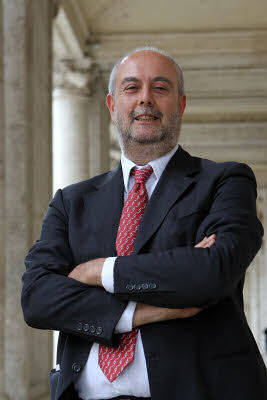Female Rebels in Art and Literature. An Exhibit and a Book Celebrate Futurist Femininity
Despise for woman, as Filippo Tommaso Marinetti chanted in 1909, or yearning towards women and their value?
The question is probably destined to remain unsolved somewhere in between these two extremes as far as art and literature are concerned, in relation to this historic and cultural movement which began during the early 20th century and ended officially with Marinetti’s death at the end of the Second World War.
Anyhow, the opening of this new exhibit that took place at Casa Italiana Zerrilli-Marimò on Friday November 6 and that was presented by Casa’s director Prof. Stefano Albertini, cast some new light upon the roles of many important women during the Futurist period.
The event was made possible by the Township of Rome and the Casa delle Letterature of Rome that for this occasion published a bi-lingual catalogue entitled “Futuriste. Women in Art and Literature”, available to the exhibit visitors.
The exhibit was curated by the young scholar Giancarlo Carpi, who also presented his book “Futuriste. Letteratura. Arte. Vita” (Castelvecchi editore 2009).
The author and curator stood face to face with American and Italian-American scholars, such as Ara Merjan (NYU), Lisa Panzera (Director of the McCaffrey Gallery of Fine Art (www.mccaffreyfineart.com) and Christine Poggi (University of Pennsylvania).
The public – very attentive during the discussion – concentrated their questions around the movement’s links with Fascism and the kinds of compromises that the Futurist women had to make in order to express their art freely.
In fact, while the first phase of Futurism was distinguished by an often anarchic fanatic warmongering ideology, the second phase effectively had ties with the Fascist regime, embracing the ideology and drawing all the favor it could from governmental communication. Unlimited faith in progress, the wiping out of old ideologies, dynamism, speed, industry and war seen as “hygiene of the people” were just some of the important themes of the movement. Of course another one was the concept of female inferiority.
Also present at the opening was the Commissioner for Culture and Communication of the township of Rome, Umberto Croppi, who underlined the importance of the celebration of Futurism in New York, the city of movement and speed.
The Commissioner explained the importance of this collaboration between Rome and New York. “In Rome we wished to celebrate this centennial between February and May 2009). The Futurist avant garde is often forgotten because solely placed side by side with the Fascist period. But the important contribution of these women, in fact free to express themselves, has given a new meaning and value to the period”
----
We had the opportunity to ask author Giancarlo Carpi a few questions before he inaugurated the exhibit.
What was it that drove this book and this exhibit from Rome to New York?
“The Futurist movement – born in Italy – is generally well-known in America, but not all of its aspects are. Especially the role of Futurist women is not well-known at all, and not only in the United States. I hope that this exhibit may contribute to the filling of this gap. Furthermore the first objective of the book was to combine the innovations that these women brought to the movement in a complete unique work, divided in seven essays accompanied by smaller pieces and works of art. It’s an anthological work, therefore critical, that wishes to be a contribution towards research and culture.”
What was the role of these women within the movement?
“Femininity, back then, represented a system of images that gradually settled in to the Futurist artistic output. Despite the initial opposition on the part of the Futurists, this aspect was gradually accepted.
In contrast, this avant garde influenced a lot of their art. Růžena Zátková, Benedetta Cappa, Valentine de Saint-Point, Maria Ginanni and Giannina Censi – just to mention a few of them – were artists who contributed innovation and artistic experimentation.”
Could you make an example of the contribution that Futurist women made to the movement?
“That pattern of “cuteness” and “tenderness” was very important in this sense. Basically the courage to give human elements to inanimate objects, disobeying the widespread theory that prohibited any reference to the concept of “cuteness” within the Futurist movement.”





































i-Italy
Facebook
Google+
This work may not be reproduced, in whole or in part, without prior written permission.
Questo lavoro non può essere riprodotto, in tutto o in parte, senza permesso scritto.